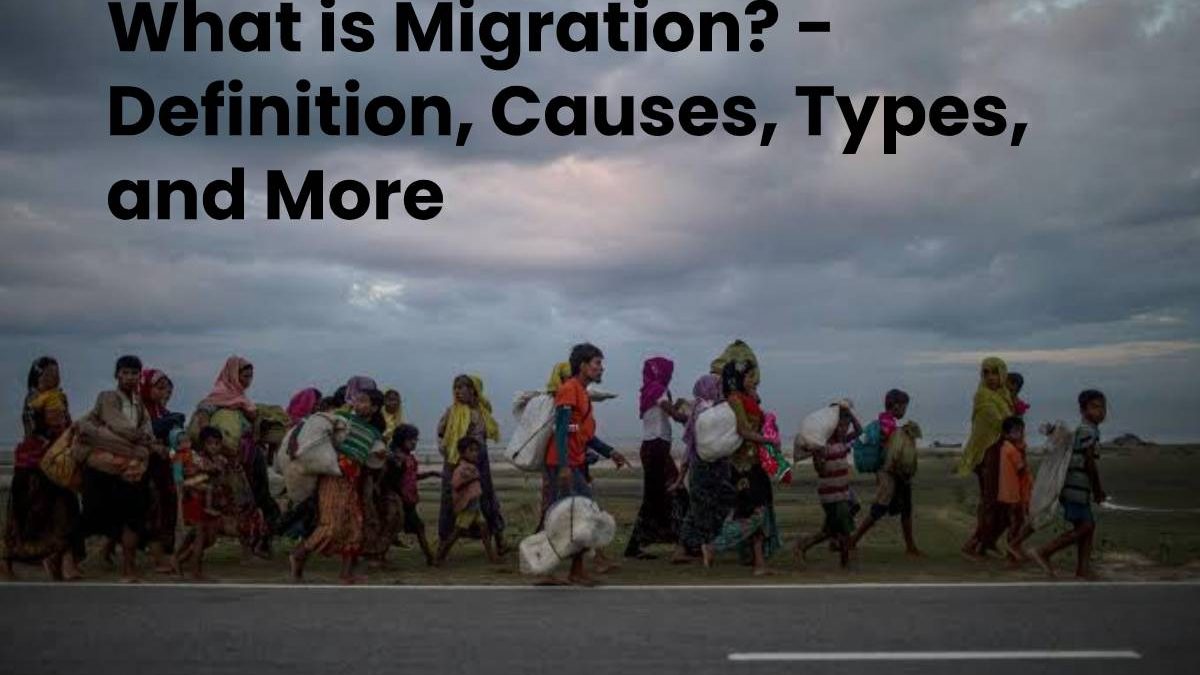Table of Contents
Definition Migration
Migration is the progress of people from one place to another, to establish their permanent or semi-permanent residence at the destination. Immigration is an essential component of change, structure, and population growth, as are birth rates and mortality.
There are attraction factors and pushing factors in one place, which influence a person’s decision to move. The first are those that attract people to stay, such as low crime rates, pleasant weather, political stability, and excellent employment opportunities. Push factors encourage people to leave the place, such as poverty, war, and floods.
[Migration] is usually voluntary, but there are many specific reasons why a person can do it. Sometimes it is forced. Immigration has been a widespread phenomenon throughout the history of humanity; However, nomadic movements are non-migratory, since their purpose is not to settle permanently or semi-permanently in one place. Nor are tourist trips, pilgrimages, and other actions that do not have this end.
Causes
The causes vary, from the pure desire to experience life in another place to the obligation to move to avoid risks found in an area. The roots of [migration] are the following:
– Economic
Seek employment, start or continue a career, in particular, take advantage of the economic benefits of a specific country, and so on.
– Social
stay close or live with the family, seek a better quality of lifestyle, and so on.
– Policies
flee from persecutions, wars, and other types of problems or political conflicts that put lives at risk.
– Cultural
Improve the quality of education, seek religious affinity or tolerance, taste for the culture of the country, and so on.
– Environmental
Escape from natural disasters, find a place with a more pleasant climate, and so on.
Why do people migrate?
There are two essential terms to understand this phenomenon. One is immigration, which occurs when people enter a country or settlement, and another is emigration, produced if people leave the place. Those who immigrate are immigrants, and those who emigrate, of course, are immigrants. It also presents itself at different scales:
– Interregional
It takes place between regions of a country. Example: from California to Washington, D.C., United States.
– Intracontinental
It occurs within the same continent — for example: from Spain to France.
– Intercontinental
It occurs when continents cross — for example: from France to Brazil.
Human beings have migrated since prehistoric times. The first [migration] happened approximately 2 million years ago when Homo erectus left Africa and settled in Eurasia. Over time, [migration]s favored the population of almost everyone, and the global community began to grow and develop.
Today, the number of migrants that a country receives is determined and influenced by the migration policies and laws of each one, so that legal migration is limited.
Types
There are several types of [migration] according to various criteria, but the most referred to are the following.
– Internal migration
It includes the movements within the same region, state, or country.
– External Migration
It constitutes migratory movements in which people settle in another region, state, or country different from the previous one.
– International migration
It happens when people move from one country to another.
– Population transfer, involuntary migration, or forced migration
In this case, people are constrained by the government to leave the place.
. It occurs when migrants decide to move due to problems experienced instead, such as wars or political conflicts.
– Chain migration
It happens in series; It begins with one or more people within a group of people, such as a family, and gradually other people from the same group migrate to the same site as their predecessors.
– Staggered migration
Unlike chain migration, it occurs gradually in short intervals. For example, from a town to a city and then to a megalopolis.
– Seasonal migration
It is a type in which people migrate, but for a certain period, so it is a semi-permanent migration. Typically, seasonal migrants are attracted to job opportunities or better weather conditions.
– Circular or return migration
In this, people who voluntarily leave their place of origin return to it after a while.
Effects
Often, migratory movements reflect the social, political, and economic conditions of the world, and have impacts on the soil and landscape of places from where and where people move. A high immigration rate in cities can cause overpopulation, and affect the availability of public services and increase pollution.
In demographic terms, migration increases or reduces the size of a population, and influences its structure and determines the size and rates of its growth. It also has a vital role in the distribution of the people, since in some countries migrants from a region or country tend to concentrate in specific areas of the country to which they migrate.

